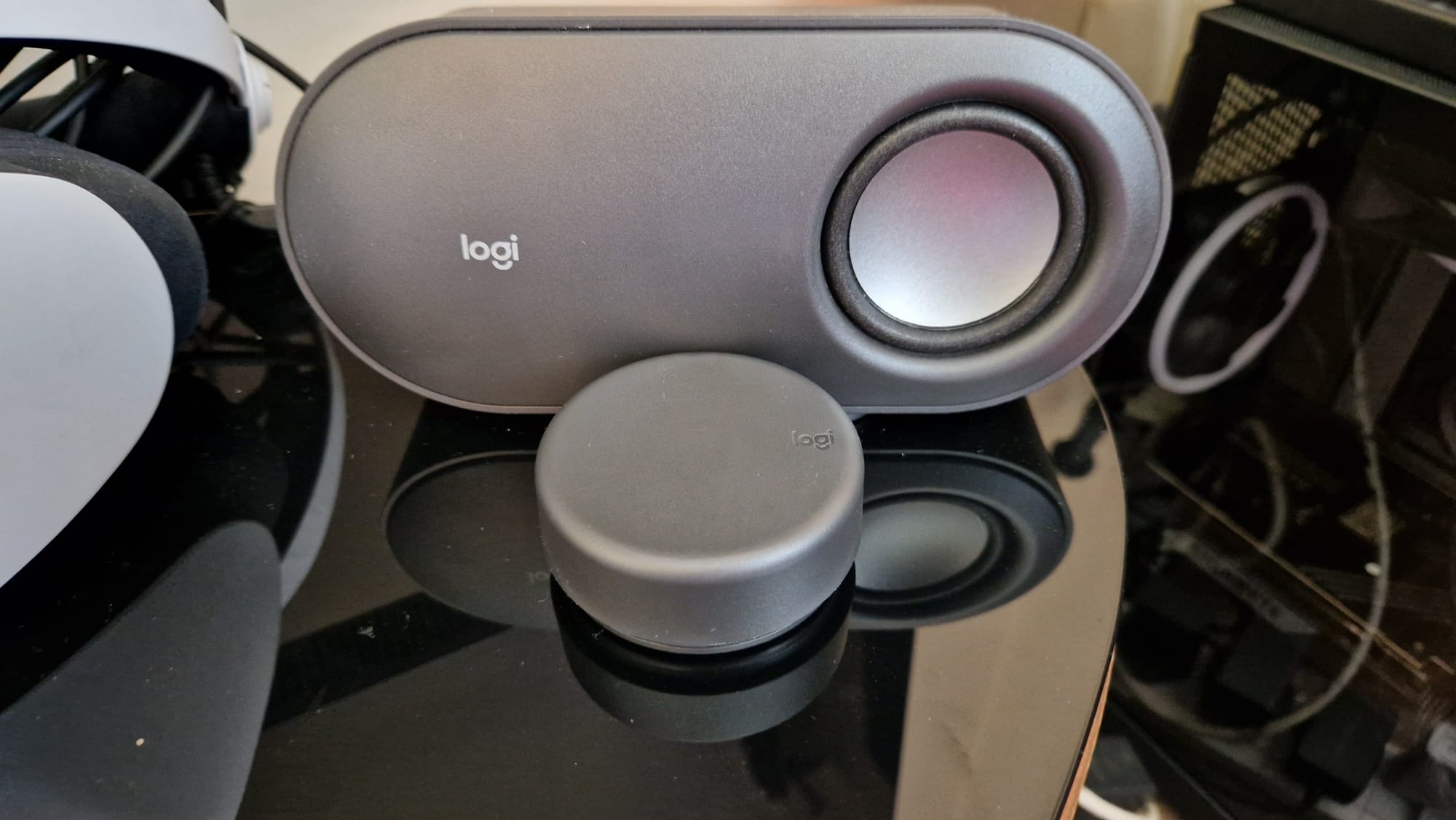GamesRadar+ Verdict
The Logitech Z407 speakers are everything you need in a computer sound system. While they might lack a more distinct design or bold aesthetic, and they might show their age a little, they sound amazing for the money they demand from you. For excellent sound quality and little to no fuss, this is one of the best sets of computer speakers you can buy right now.
Pros
- +
Excellent power
- +
Amazing detail in the sound
- +
Great bass level out of the box
- +
Control puck is great (when it works)
- +
Three connection types
- +
Decent price
- +
Practical design
Cons
- -
Micro-USB
- -
Puck doesn’t always work
- -
Design is quite bland
Why you can trust GamesRadar+
There’s nothing immediately striking about the Logitech Z704 Speakers when you first give them a look. They look pretty similar to any other run-of-the-mill, affordable computer speakers with fairly greywashed hues and muted silvery highlights. They look ordinary, and I’d say that’s one of their greatest tricks.
You see, compared to a lot of the other best computer speakers out there at the moment, the look of the Z407s is disarming. Their design tells you not to expect much - that they’re just baby’s first set of PC speakers, but they’re anything but. Soundbars, 7.1 setups, and audiophile-tilted speakers can set you back a small fortune, and I’m not sure half of them sound much better than Logitech’s entry-level 2.1 solution.
Let’s face it, a gaming PC setup is bitty and a never-ending task to assemble. There are so many components, peripherals, and truly unaffordable parts to think about, so speakers can often be an afterthought luxury. For that reason, it’s important that affordable options exist for those of us who blew our budgets on a GPU, CPU, or new monitor. At the same time, audio quality is important, so they need to get the job done. At $119 / £119, this aging 2.1 setup still feels worth every penny, and it might just be the best set for most players.
Design
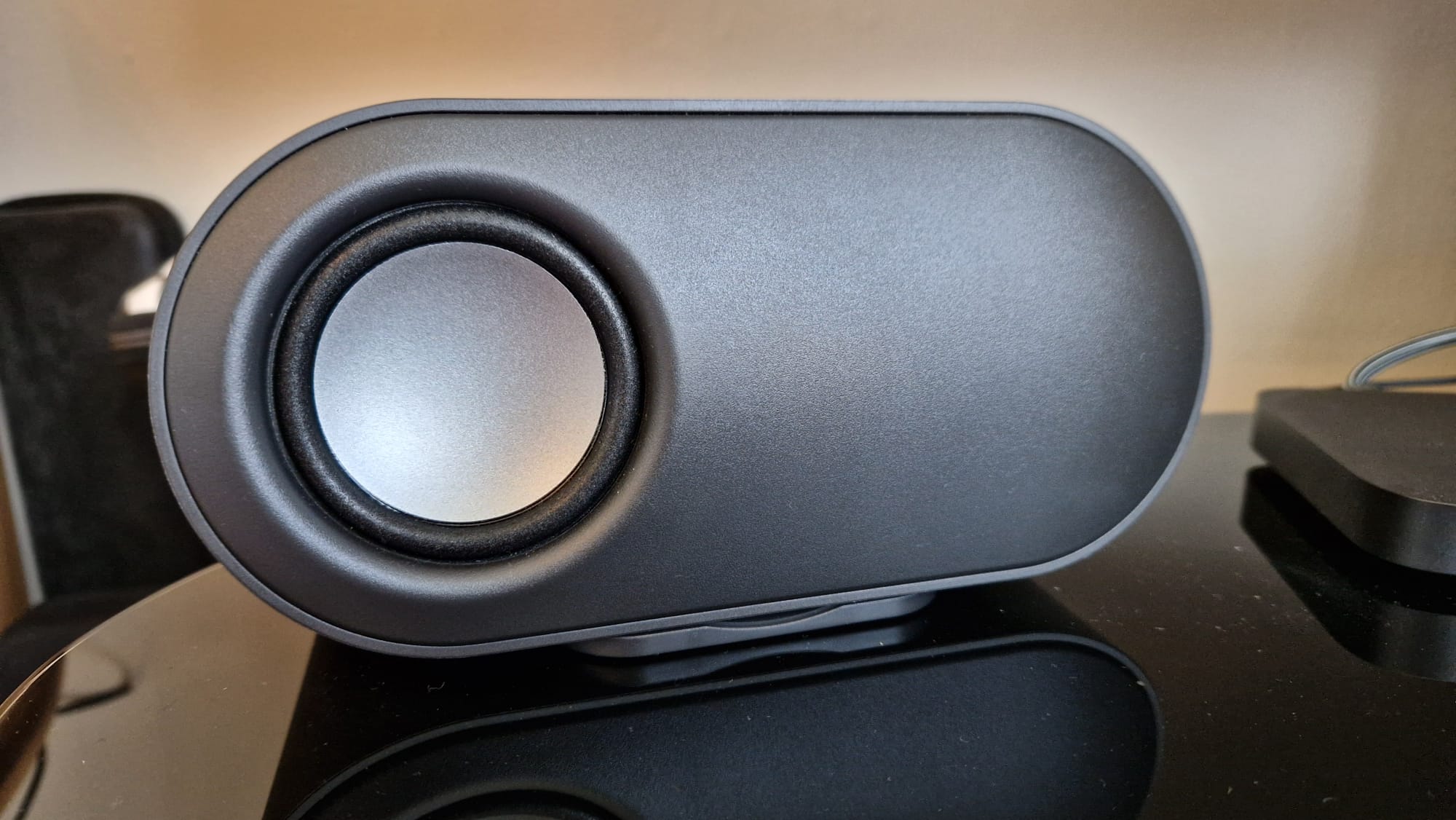
For its lack of a jazzy or even premium look, the Logi Z407 speakers do have a lot of practicality. This is a 2.1 system (one left, one right, one subwoofer), and although the two speakers have been designed to sit on a desk or a bookshelf, they have a great stand system that gives them versatility. On the bottom and sides of both the left and right speakers are some mounting rails for their stands, which means they can stand upright, or, if you want to use them in a gaming TV setup like I have, you can lay them down horizontally.
Compared to something like the SteelSeries Arena 7 speakers, they have just about the same footprint in terms of pure real estate they’ll steal from your desk, but thanks to a slimline oval shape, they don’t feel as bulky, and the ability to sit them in different positions does give them added convenience.
Satellite
Height: 199.9 mm
Width: 93.9 mm
Depth: 85.2 mm
Weight: 389.6 g
Subwoofer
Height: 240 mm
Width: 234 mm
Depth: 180 mm
Weight: 2450.6 g
Coming in just one Graphite colorway, the system feels quite neutral and blends in with the mix of technology on my TV stand without offending any existing color scheme. The subwoofer, for how powerful it is, actually has a very small size, which again, feels much more considerate than the equivalent from SteelSeries. On the other hand, the Arena 7 have a bit more personality thanks to RGB arrays on their backs. To get a more understated look from SteelSeries, you have to opt for the SteelSeries Arena 3. I suppose you’ll need to decide which suits you and your setup more.
Interestingly, there are no on-board dials, buttons, or knobs with Logi’s Z407s. For all your control needs, you’ll be at the mercy of a small, wireless control puck, which I’ll tell you more about in a second. From a pure design standpoint, having no control options on the speakers themselves is certainly a choice - make sure you don’t lose or break that controller.
Weekly digests, tales from the communities you love, and more
Features
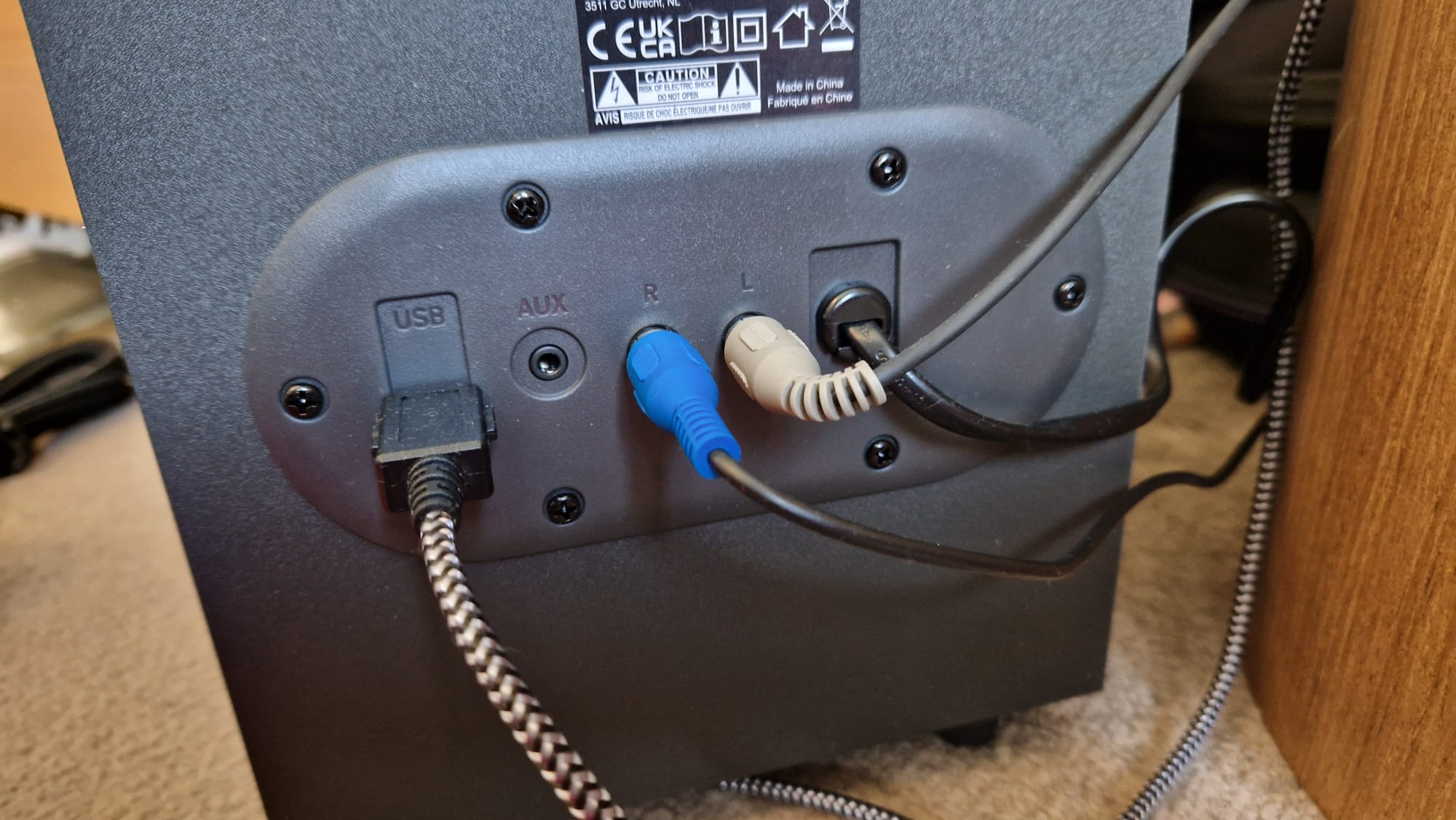
The downward-firing subwoofer combines DSP (digital signal processing) capabilities with 20W of power. The two satellite speakers have 10W of power each, harnessing tweeters of around one inch in diameter. That means the entire setup gets a peak wattage of 80W. I’d love to go into more detail about the types of drivers used and the nitty-gritty details of each speaker’s innards, but Logitech reveals very little about these speakers on its store pages. Whilst that lack of detail might worry the most audio-centric shoppers among us, I very quickly came around when I heard the noise these things make.
Logitech hasn’t provided many ways to customize sound profiles either, even if some of the best gaming sound systems might allow for it. There’s no companion software to speak of, either. The Z407s launched in early 2021, so it was a bit before this became the done thing. However, control isn’t totally in Logi’s hands. Coming with the setup is a small control puck that acts as a catch-all remote. By twisting the top to the left or right, you can increase or decrease the volume, but combinations of clicks also work as play/pause and skip functions.
By long-pressing the puck’s button, you can enter bass mode and use the scroll function to adjust its level. I have to admit, out of the box, the mix was just right for me, but if you feel the need to turn it down, or really crank it for a party, the option is there. Some handy notification sounds tell you when you’ve entered bass mode, when you’ve connected to an audio source, and an indicating LED on the bottom of the puck also helps you know which connection mode the speakers are in.
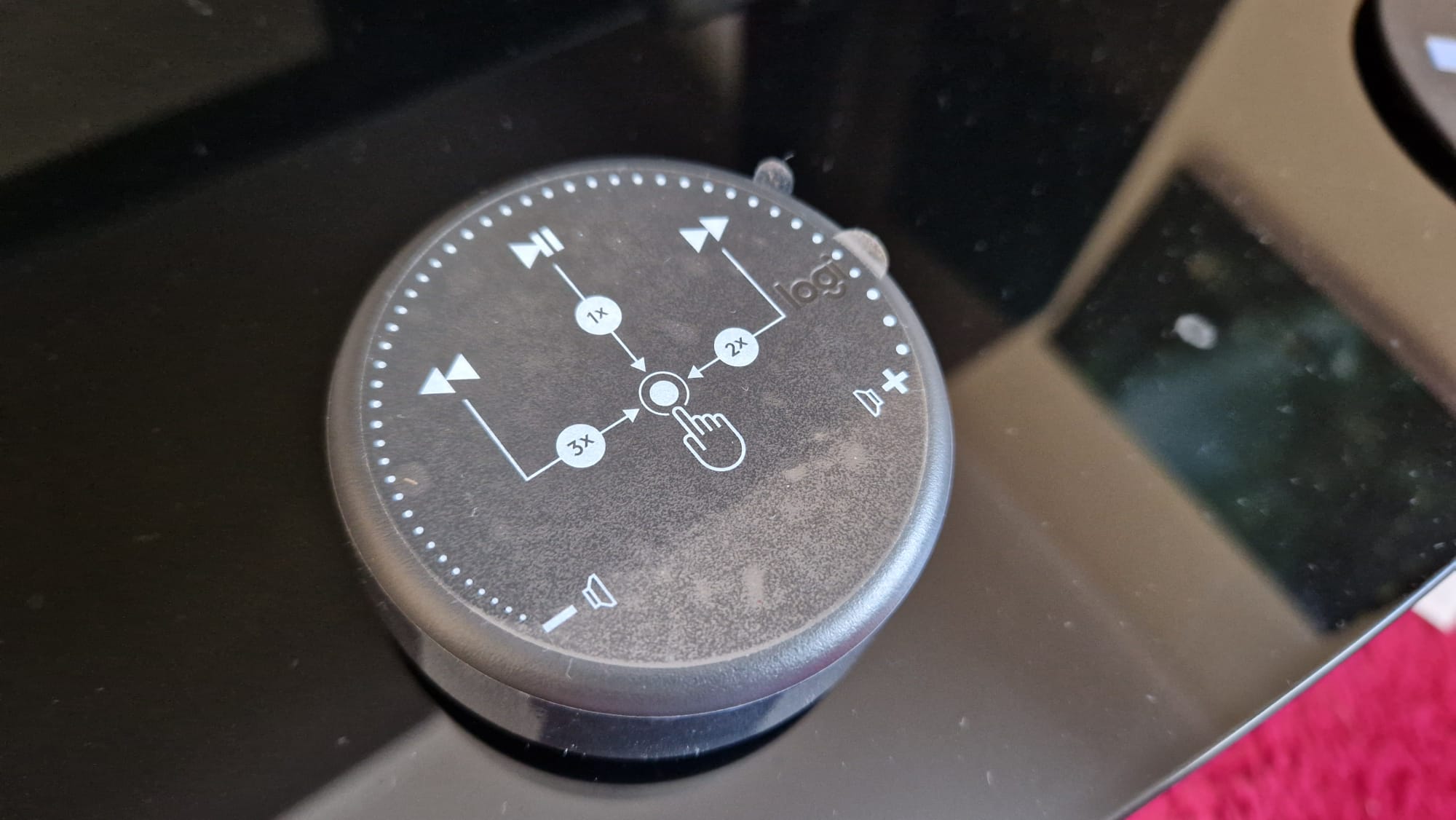
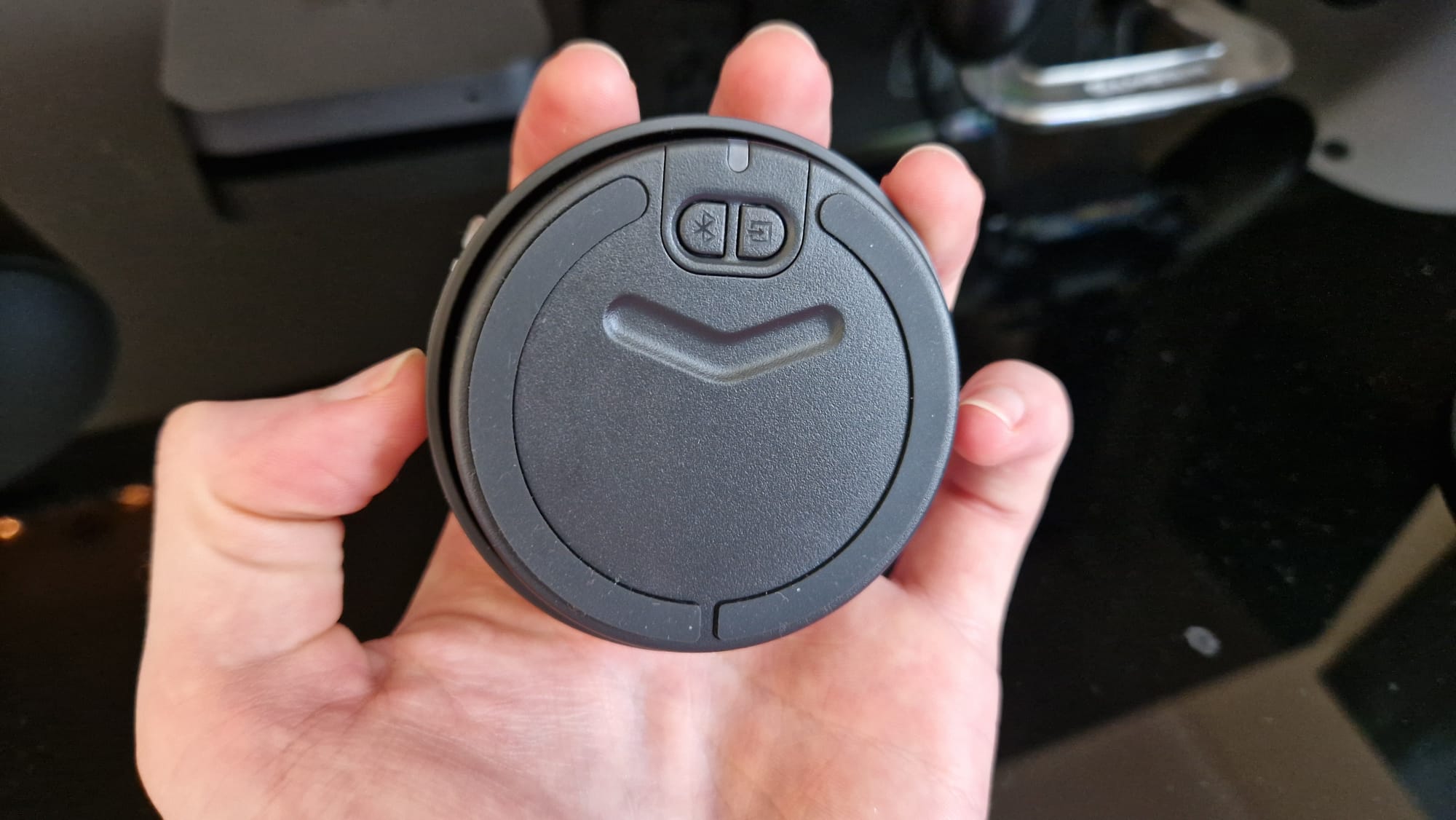
When it comes to connectivity, there are three options. The first, and I’d argue, main connection is through a USB to micro-USB port on the back of the subwoofer. In 2025, seeing a device still being sold with a micro-USB connection stings a little, more so because there’s no cable provided in the box. This really does feel outdated at this point, but besides a lack of convenience, I had no problems with the speed of the connection when testing. Still, I would have expected Logi to update this at some point if it wasn’t going to produce a newer 2.1 set, or at least adjust the packaging to also provide an appropriate cable.
Luckily, if you’re not up for digging through your drawers to find a functional micro-USB cable, a 3.5mm aux port resides on the back of the subwoofer, allowing you to hook into a TV or potentially one of the best streaming mixers. The third and final connection type is Bluetooth, which can come in handy depending on your setup and room size. This was reliable enough in testing, although I did notice a touch more latency than with the other outputs. Cue an Imperial Death Star worker saying, “It’s older Bluetooth, sir, but it checks out”.
In the box, Logi is semi-generous if you can forgive the lack of a micro-USB cable. You get the two satellite speakers, subwoofer, control puck, two AAA batteries for it, a mains power cable, and the RCA cables for hooking up the satellites to the sub. No need for a pesky speaker cable, the simple setup is all handled through the subwoofer.
Performance
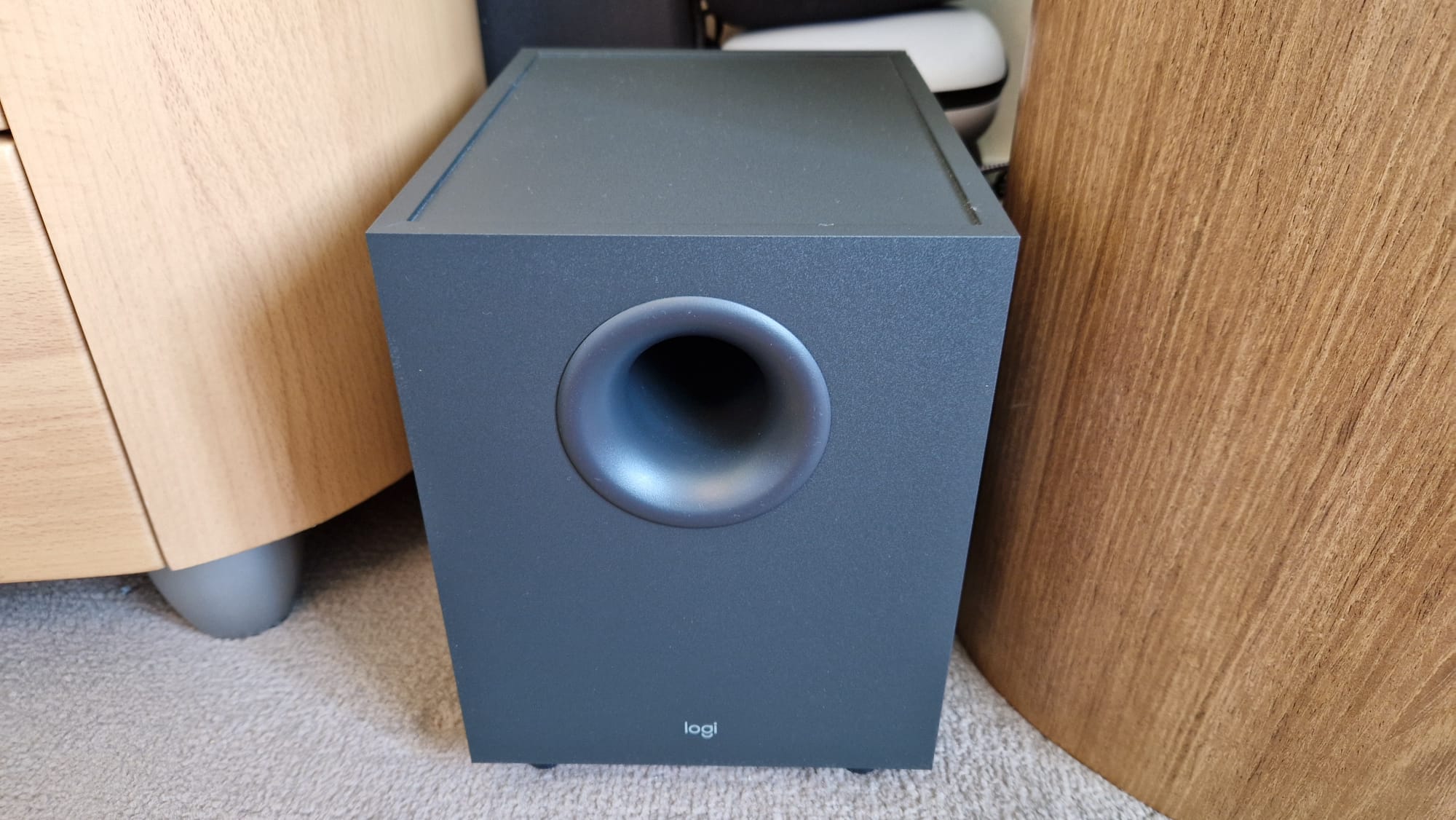
For a fairly affordable, plain-jane-looking set of computer speakers, I really didn’t expect the level of quality the Logi Z407s has. These are some bloody powerful speakers, and although it may seem like low-hanging fruit in a sound system review to say my neighbours probably hate them, I think they’ve certainly noticed the difference since I started using them. These pack a serious punch if you want them to, and keep in mind I’ve been testing them through my TV setup, so I’m saying that knowing full well I’ve had them a bit further away than many desk users will. The Z407 emanate a wall of sound that doesn’t feel proportional to their size, and usually when that’s the case, the detail or treble can suffer, but it doesn’t at all here. You’ll hear me say this a few times in this review, but this might be one of the most detailed 2.1 speaker systems I’ve come across.
Comparing them to the Ruark MR1 Mk2 speakers I have at my desk, they sound just as detailed, if not enhanced, thanks to the additional bass you get from the subwoofer. Ruark’s audio has a richer sound to it overall - you can definitely see why it’s priced for audiophiles, but for a two-speaker solution which costs a lot less, Logi’s detailing is surprisingly good.
I’ve tested the Z407s over countless hours of playing Avowed, Assassin’s Creed: Shadows, Middle-Earth Shadow of Mordor, and Dragon Ball: Sparking Zero. I'm constantly amazed by the level of detail that each game’s audio has when it’s coming through these speakers. The subtleties of Avowed’s audio have been a real standout during testing. I usually like to wear one of the best gaming headsets when playing games in first-person, but the positional audio while exploring the Living Lands has been so solid through Logi’s speakers that I’ve taken it as an opportunity to protect my eardrums a bit. Nevertheless, I haven’t felt as though I’m missing out on immersive sound. The twinkling audio of lootable treasure in Obsidian’s 2025 hit is always easy to pinpoint, and that’s impressive for a 2.1 system.
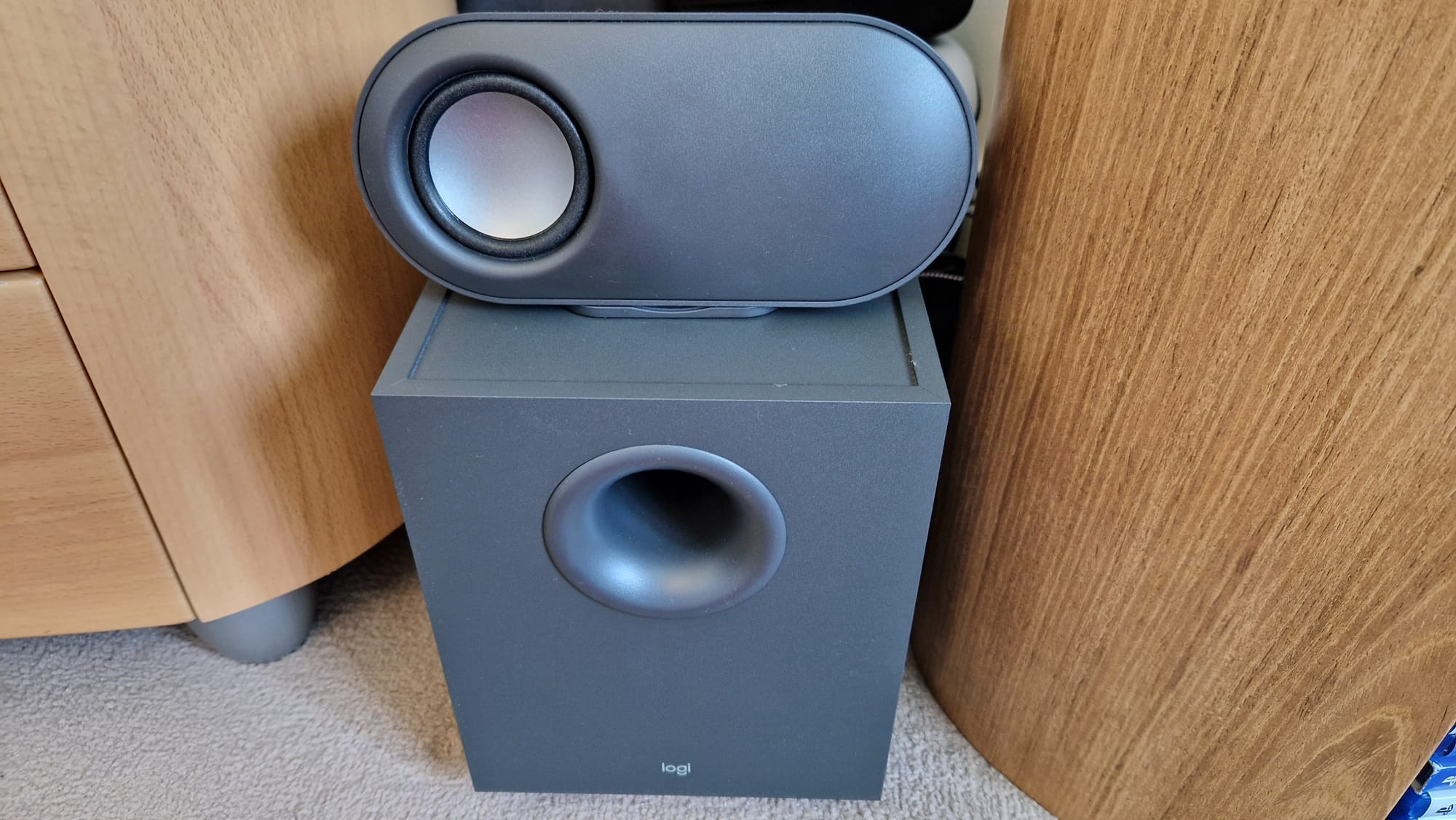
US: $119 at Amazon
UK: £120 at Currys
That’s great for ambient sounds, but then, when cutscenes begin, the Z407 speakers take on a whole new persona. Whether it’s Tallion and Celebrimbor arguing with one another in cold, brooding fantasy timbres, or Kai’s bassy voice giving my Envoy his always valuable advice, the clarity and rich tones of voice acting sound great through these speakers. Combat is powerful, with explosions and effects working overtime to immerse me in each battle. Overall, a fantastic set of gaming speakers for anyone playing on one of the best gaming PCs.
But a set of speakers isn’t just for gaming. I am constantly listening to video game soundtracks, movie soundtracks, among other orchestral music I can work along to during the day, so how these sound through is always going to be a big factor for me before coming to a review verdict.
I probably sound like a broken record here, but the crisp detail of these speakers makes pieces of music I’ve listened to hundreds of times sound new. Logi’s retail page and marketing material are pretty tight-lipped about what particular DSP is going on behind the scenes, but each soundscape is balanced blissfully. The subwoofer has this velvety, brain-tingling quality to it, while the satellites will harmonise over the top with precise brush strokes, bringing out details in your favorite music you had no idea were there.
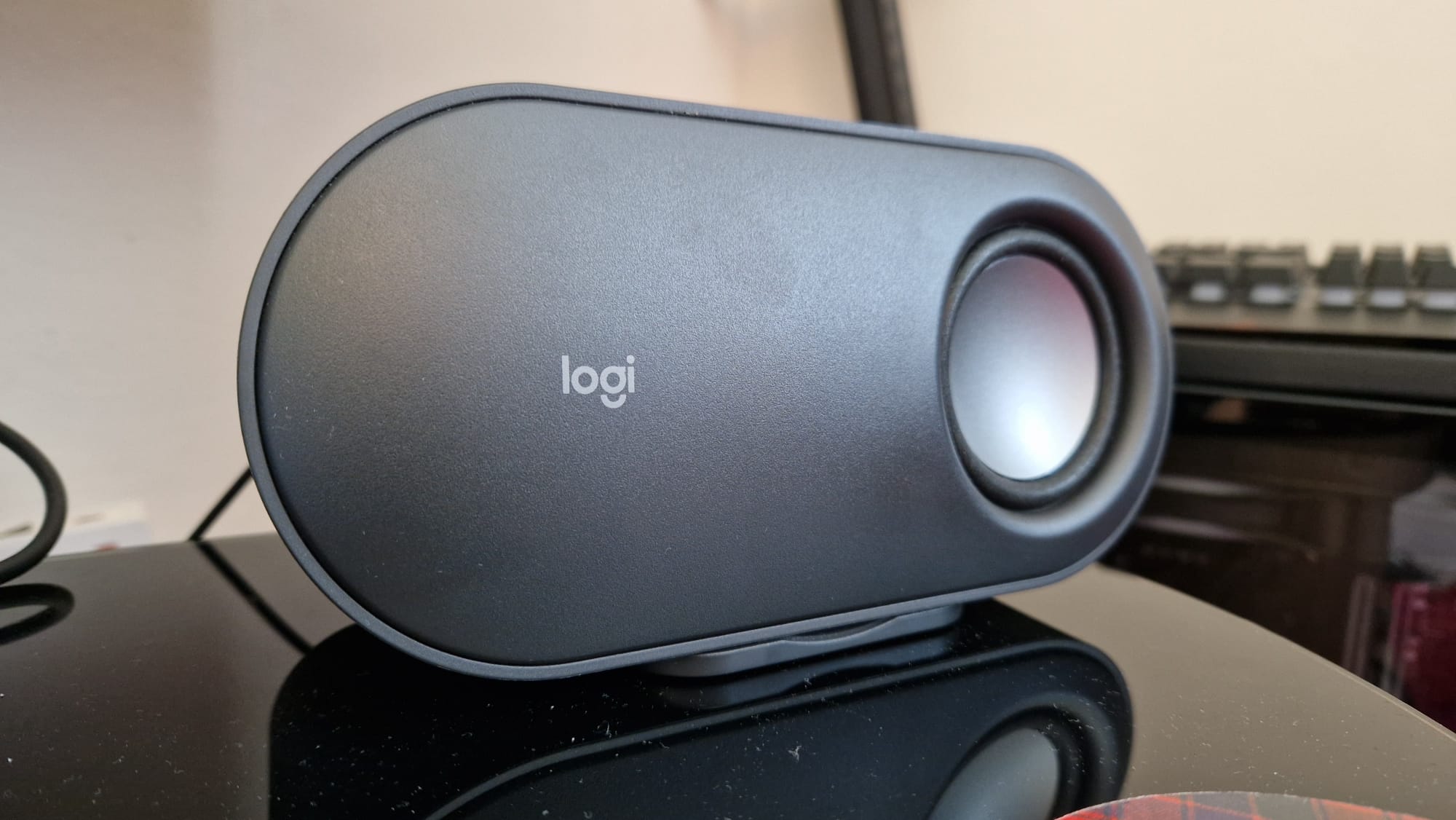
That’s what I found listening to all sorts of soundtracks, with Ghostrunner’s futuristic club feel sounding just as at home as DOOM’s metal work. All the while, the powerful orchestral swells of Llan Eshkeri’s Ghost of Tsushima soundtrack took me right back to Jin Sakai’s adventure. These speakers have a way of bringing out some of my favorite moments of music, and even at lesser volumes, they don’t lack the detail that these soundtracks are known for.
The best example I can give of this is when I was listening to live recordings of a few musicals. Having just discovered Natasha, Pierre, and the Great Comet of 1912, I wasn’t all that familiar with it, but its prologue (which is a banger) is a particularly wordy piece. I hadn’t felt truly wrapped up in its story despite listening to this number a few too many times last month, but the clarity of the Z407 brought out each lyric so I could really say I knew each character well.
So, all in all, we’re talking about a surprisingly good level of audio quality for the money you part with. But on a practical note, how are they to use? Well, you certainly miss out on the USB-C of it all. I think the audio quality of the SteelSeries Arena 7 speakers pales in comparison to the Z407s, especially at lower volumes, and with detail in the treble ranges, but Sonar software does allow you to fine-tune any SteelSeries audio device. I’m not sure you really need companion software for speakers like the Z407, and oftentimes I find this to be more of a gimmick than it is “for glory”. Still, that’s what you’re missing out on here versus the obvious competition.
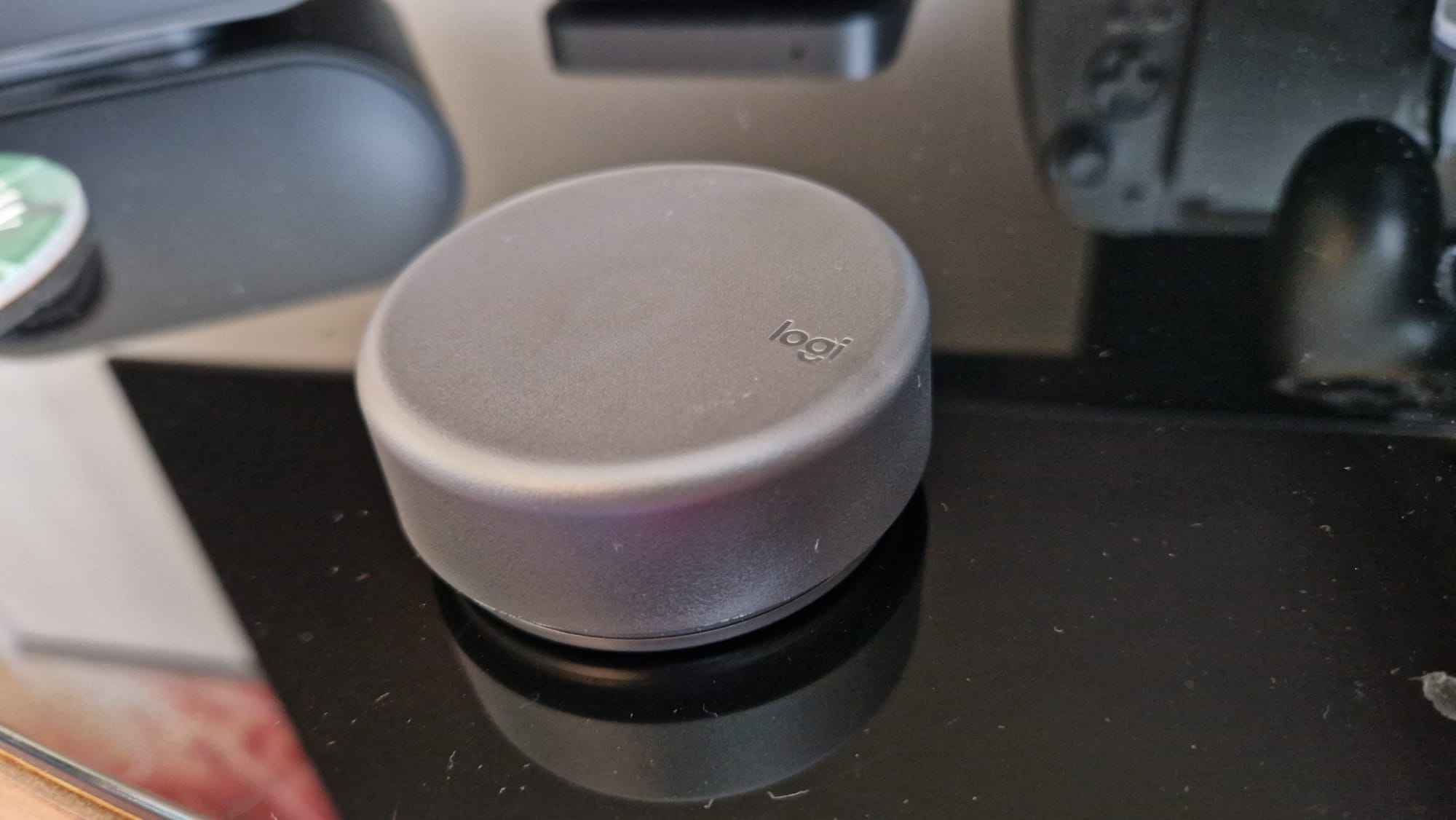
Logi has something the Arena loadouts don’t, however, and it’s the brilliant little control puck. I love this, and I really enjoy having a tactile way of controlling volume. A scroll wheel is so much more satisfying than a remote with buttons, and it makes for some fun swells in music you can crank up the volume for with a DJ-like twist. The puck, however, isn’t perfect. There are a lot of times where it refuses to wake up from sleep, despite having a connection range of 20m. I don’t know whether this is a signal-blocking issue, but sometimes you twist the volume dial and nothing happens. It’s disappointing, but it only occurs some of the time.
In the same way, the control scheme is plastered on the puck’s top with a sticker that, if it’s peeled off, will remove any reference to what the puck is capable of. I expect this was a design choice to keep to a minimalist aesthetic, but it is a remote control first and foremost, so function should come before design. An embossed or engraved dimple, or some symbols on the puck itself wouldn’t ruin anything for me, especially when the entire speaker setup doesn’t really have a very bold design language to upset anyway.
Should you buy the Logitech Z407?

I’m slightly worried that some audiophile purist is going to come at my email inbox to tell me I’m wrong for this, but the Logitech ZZ407 speakers are, in my opinion, some of the best value you can get on the market. Yes, they’re older, yes, they don’t have as much customization as some smarter options, and maybe they suffer from a lack of a bold aesthetic. There is no escaping the fact that this sound system delivers a pure, bassy, rich, and detailed performance of whatever audioscape you throw at it.
On top of that, it doesn’t cost an arm and a leg, and whatever the audiophile purist drafting a strongly worded email to me right now is about to recommend instead, the $300+ sound system they like isn’t for everyone. I am (slightly weirdly) obsessed with audio design and music, and these speakers constantly surprise me with how good they are at representing them.
I hope Logi comes back to us with an updated version soon, maybe in line with its Logi-tune software to allow for more customization, and with a USB-C connection. Until then, however, the practicality of these speakers is enough for me, and the versatility of connection types works as planned. I’d argue they’re some of the best on the shelves.
How I tested the Logitech Z407 Speakers
I put the Logitech Z407 speakers to the test in my TV setup for around three or four weeks before this review was written. In that time, I used them for loads of gaming sessions, and I listened to countless hours of music on them while working. I listened to a wide variety of soundscapes and musical genres with them, comparing them closely to the sound quality I know from the Ruark MR1 speakers I use on a day-to-day basis, as well as the SteelSeries Arena 7 I was using until recently.
For more on how we test the latest tech, check out the full GamesRadar+ Hardware Policy.
Upgrade more of your PC setup by hunting down the best CPU for gaming, the best RAM for gaming, and the best PC cases.
One of my earliest memories is playing SuperMario64 and wondering why the controller I held had three grips, but I only had two hands. Ever since I've been in love with video games and their technology. After graduating from Edinburgh Napier University with a degree in Journalism, I contributed to the Scottish Games Network and completed an Editorial Internship at Expert Reviews. Over the last decade, I’ve been managing my own YouTube channel about my love of games too. These days, I'm one of the resident hardware nerds at GamesRadar+, and I take the lead on our coverage of gaming PCs, VR, controllers, gaming chairs, and content creation gear. Now, I better stop myself here before I get talking about my favourite games like HUNT: Showdown, Dishonored, and Towerfall Ascension.
You must confirm your public display name before commenting
Please logout and then login again, you will then be prompted to enter your display name.
